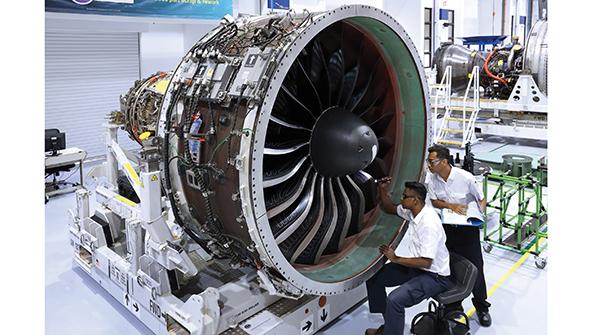
Pratt & Whitney is undertaking a hiring campaign for its Asia-Pacific MRO facilities, driven by engine maintenance demand that has rebounded strongly in the wake of the COVID-19 pandemic.
The company is aiming to add about 900 people across its global aftermarket services this year, and half of these will be in the Asia-Pacific region, says Tim Cormier, Pratt’s vice president for Asia-Pacific aftermarket operations.
The Asia-Pacific region includes joint-venture engine centers in Singapore, Shanghai and Christchurch, New Zealand. Pratt also categorizes its Istanbul engine center as part of the Asia-Pacific region. In addition to the engine centers, Pratt has component repair units and other related facilities in Asia.
Pratt’s hiring push is a notable turnaround from its situation in the early stages of the COVID-19 crisis. The company was forced to cut 500-600 staff from its Asia-Pacific operations in 2020, representing 20-25% of that workforce, Cormier says.
However, the robust demand recovery has allowed Pratt to essentially return to its prepandemic staff size. The hiring goal for this year would move the Asia-Pacific workforce beyond its 2019 level.
Pratt is not immune to the hiring challenges being faced by the aviation industry globally. “It’s a tight labor market [at the moment],” Cormier says. “It is certainly hard work to hire people in a competitive [environment] like this.”
The company began “restarting its hiring machine” in mid-2021, Cormier says, and Pratt managed to meet its goal of adding 250 workers to its Singapore operation last year. The company also is making progress toward its 2022 hiring target as it looks for workers across all of its Asia-Pacific locations and roles. The lifting of border restrictions has helped the Singapore operation attract workers from Malaysia and other countries.
Demand for Pratt’s engine MRO work in the Asia-Pacific region dropped by as much as 50% when the pandemic first hit in early 2020. But it began picking up more strongly than expected by the fourth quarter of that year, Cormier says. Now the workload has grown past prepandemic levels. The increase has been mainly driven by two factors: a surging air cargo market that boosted freighter services and the return of domestic and short-haul narrowbody operations.
High utilization rates for freighters have spurred MRO work for PW4000 engines. Likewise, the narrowbody recovery has meant increased operations of both the IAE V2500 in Airbus A320-family aircraft and the PW1100G geared turbofan (GTF) engines in many A320neo-family aircraft.
The rebound in MRO demand for these three engine types “has been a real bright spot” for Pratt’s Asia-Pacific facilities, Cormier says. He estimates that the GTF and PW4000 each comprise about 45% of the workload for the Singapore engine center, which is branded as Eagle Services Asia.
Longer-haul international fleets have been slower to return to service, affecting MRO demand for engines on widebody passenger aircraft. The Airbus A380 has been particularly affected, with most of these aircraft in the Asia-Pacific region still grounded. This means a limited number of overhauls are being conducted for Engine Alliance GP7000s that power A380s, Cormier says. However, this was a much smaller slice of the Singapore center’s workload than the other types.
Aside from hiring, supply chain disruption is the other major challenge facing Pratt & Whitney’s Asia-Pacific aftermarket operations. This is an issue common to the broader MRO industry.
Supply chain delays became more evident in late 2021 and early 2022, slowing Pratt’s turnaround times, Cormier says. Problems have affected the large suppliers as well as deeper in the supply chain with second- or third-tier organizations.
Cormier notes that the stress in the supply chain has been easing recently, improving Pratt’s turn times and predictability. The resumption of more international flights has helped, providing more aircraft belly capacity for shipping.
Pratt’s Asia-Pacific engine centers did not have any major expansion projects underway that could have been disrupted by the pandemic. However, Pratt had made significant investments in automation and technology at the engine centers and parts-repair units in the years leading up to the COVID-19 crisis.
The company had also installed GTF lines at the Singapore engine center, which inducted the first of these engines in January 2019. The rate of ramp-up for GTF work in Singapore has been “phenomonal,” Cormier says. The facility was handling just a few GTF engines 2-3 years ago, and it can now accommodate more than 100 per year.
Strong customer demand for GTF engines means Pratt will continue to assess whether more aftermarket capacity is needed in the region, Cormier says. The Christchurch engine center is currently dedicated to V2500 engines, but could potentially add GTF capability in the future, he says.

